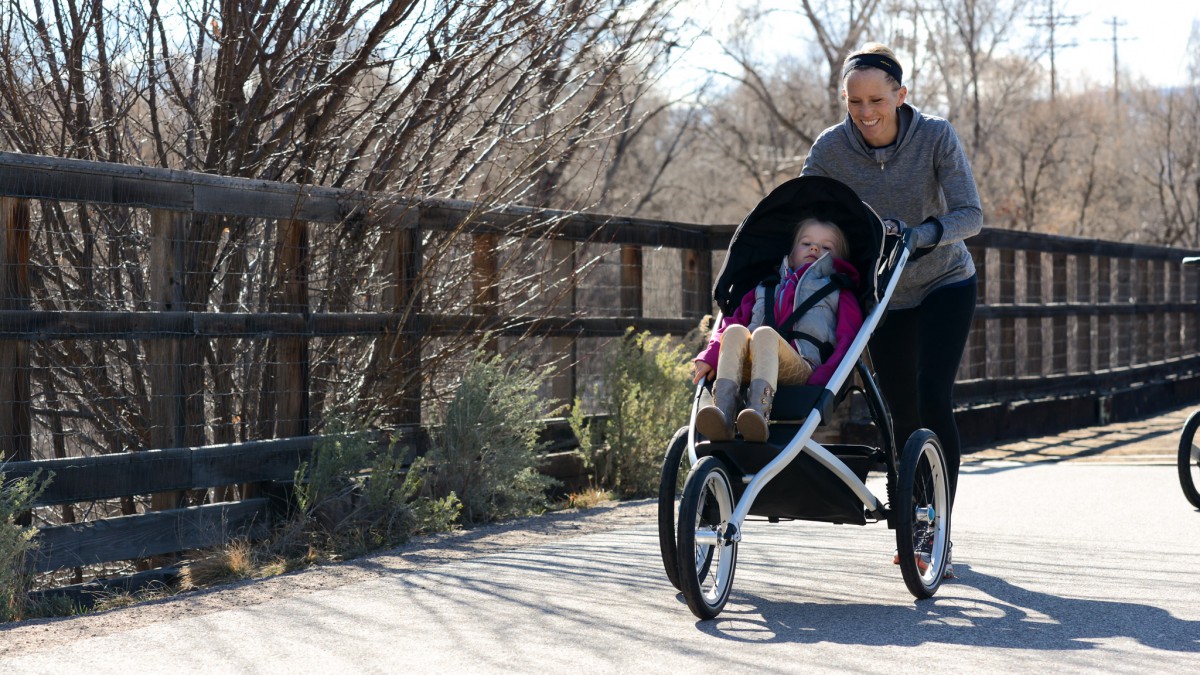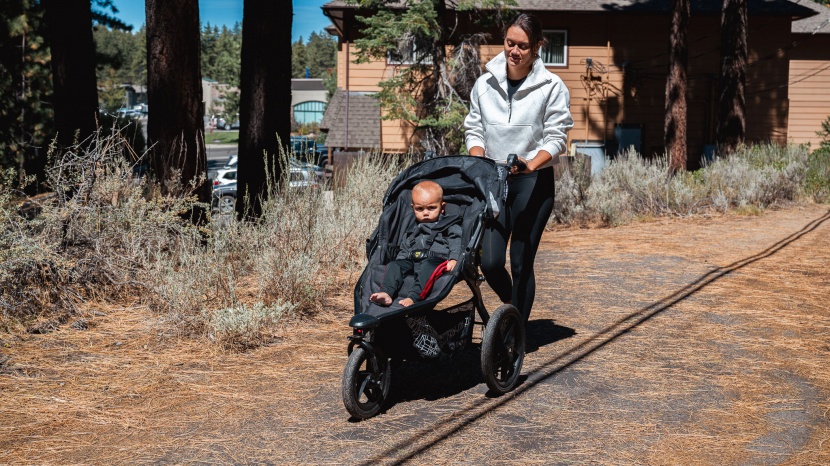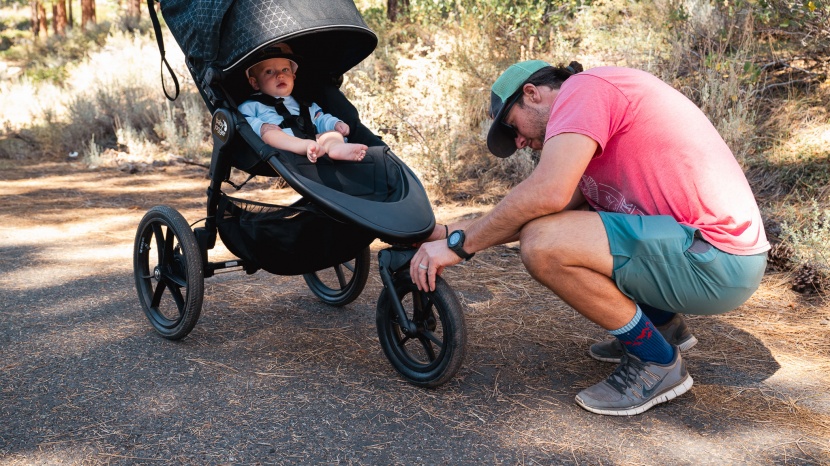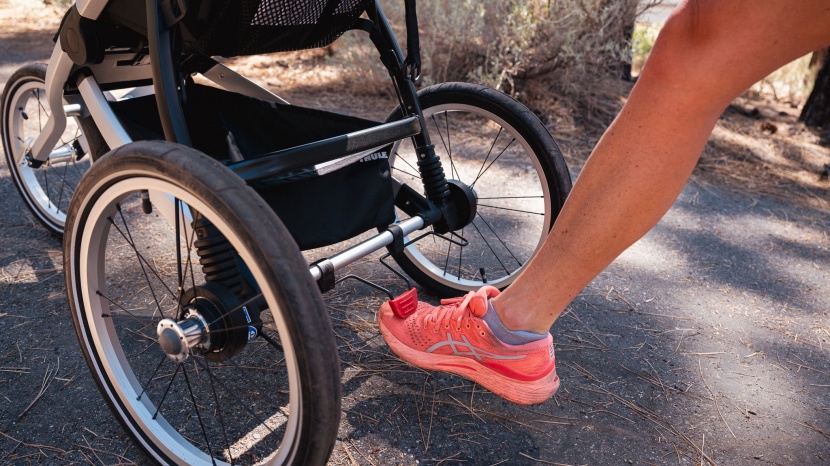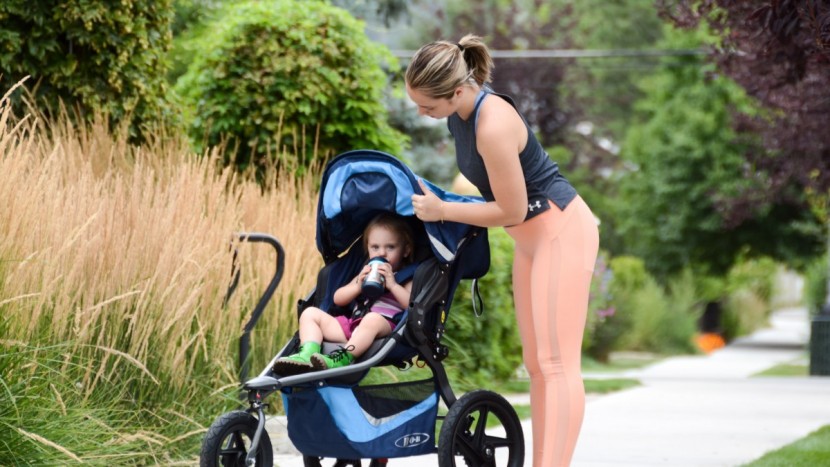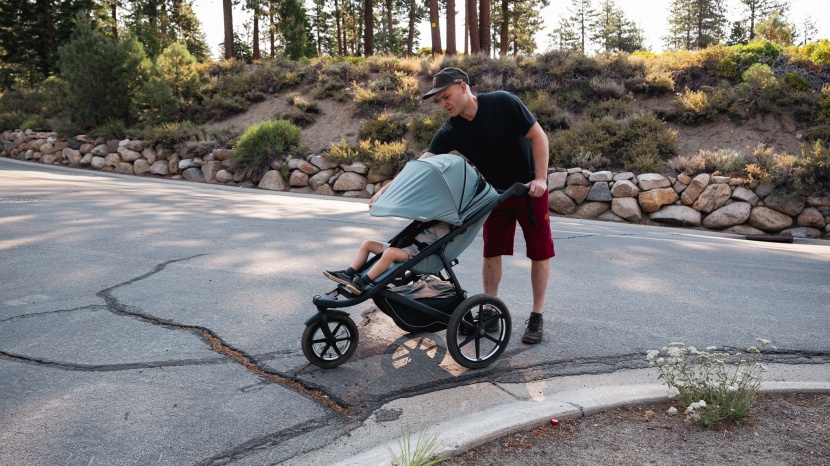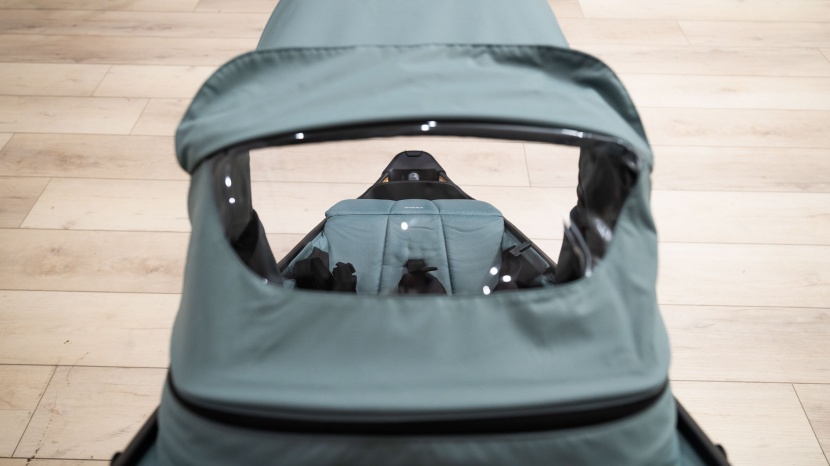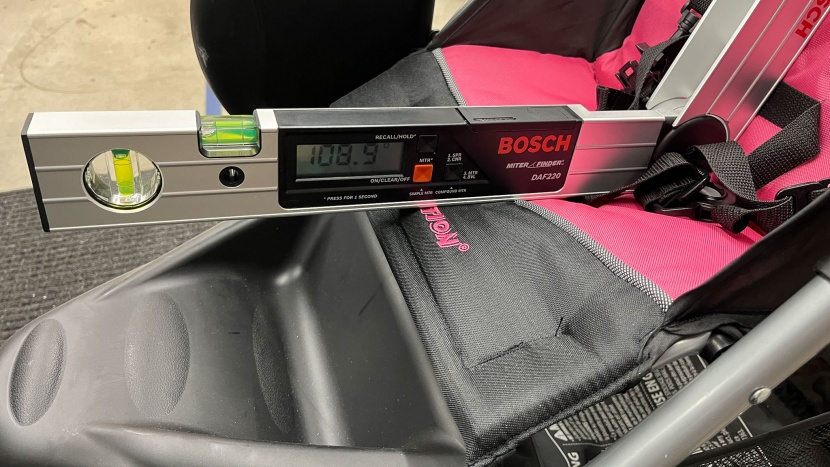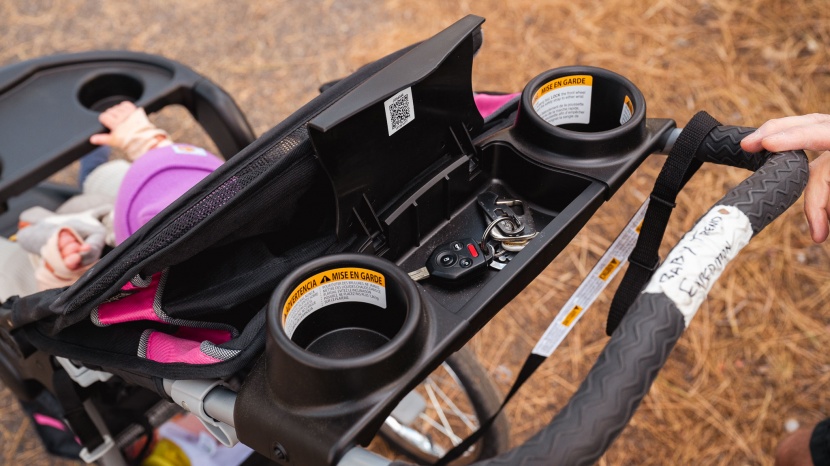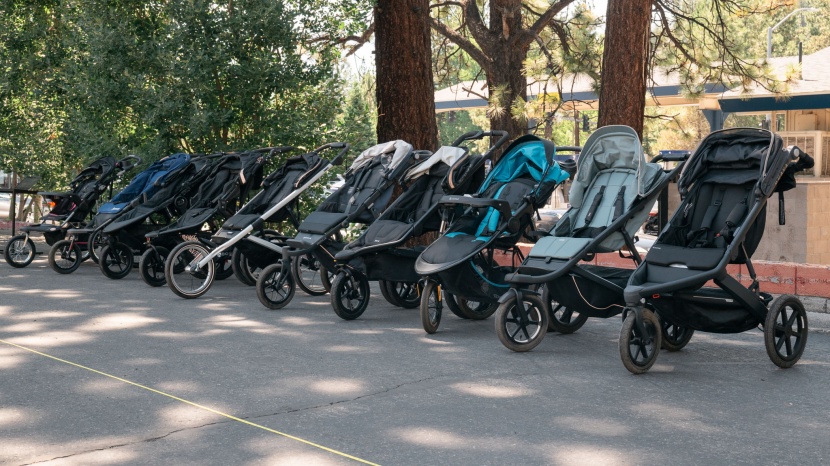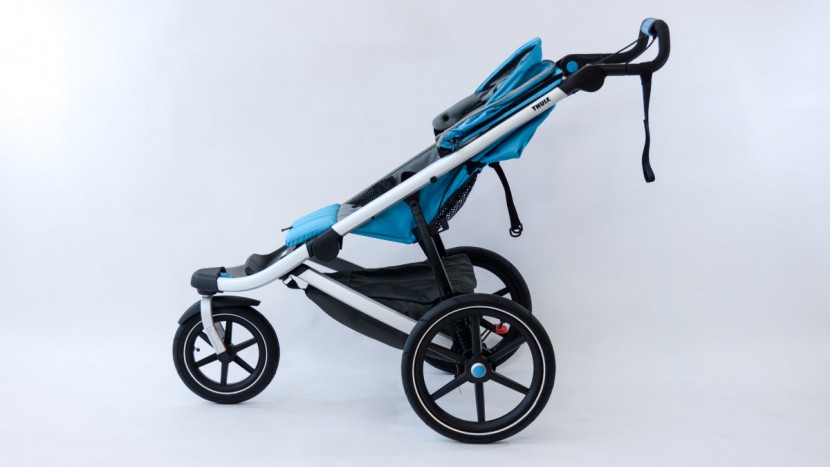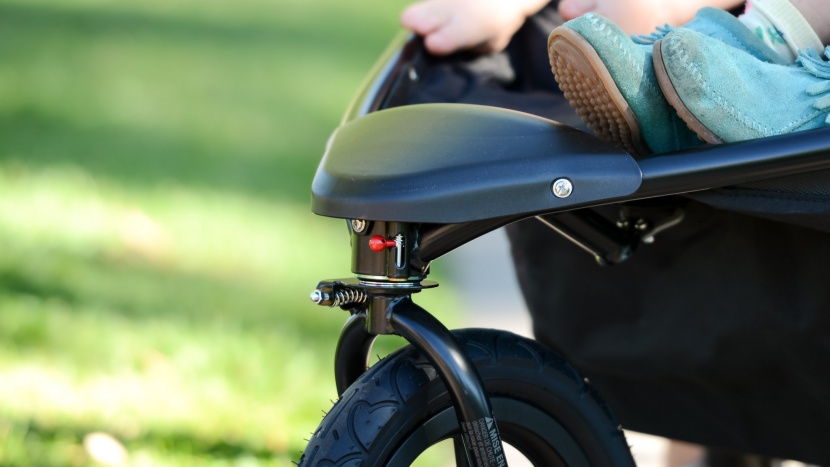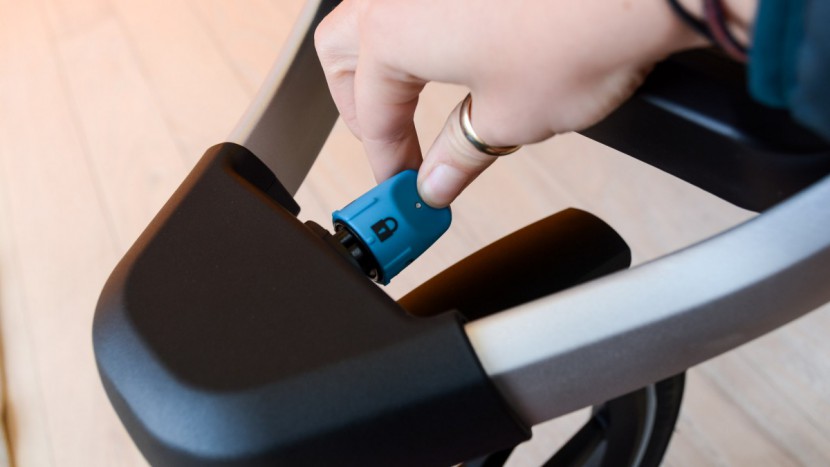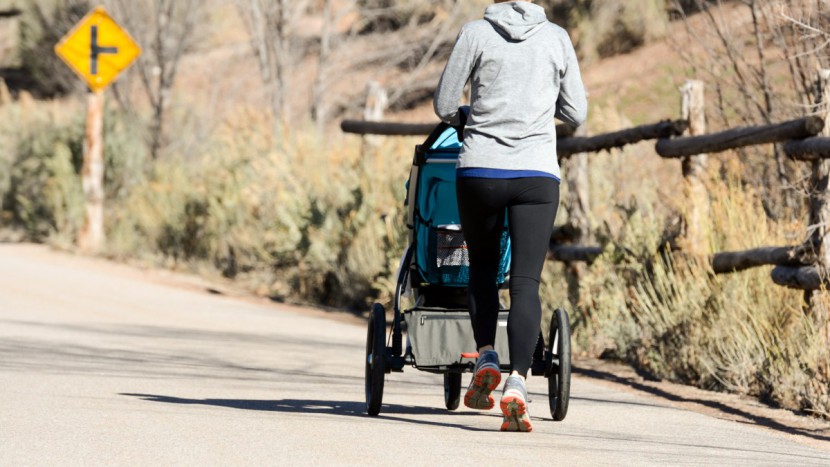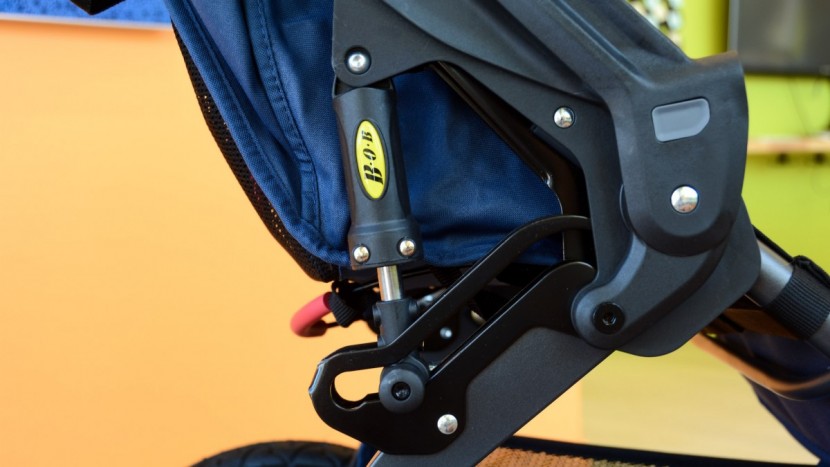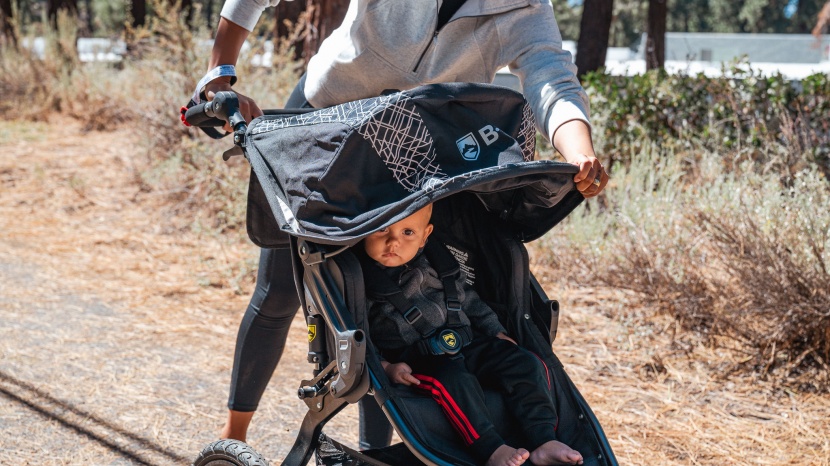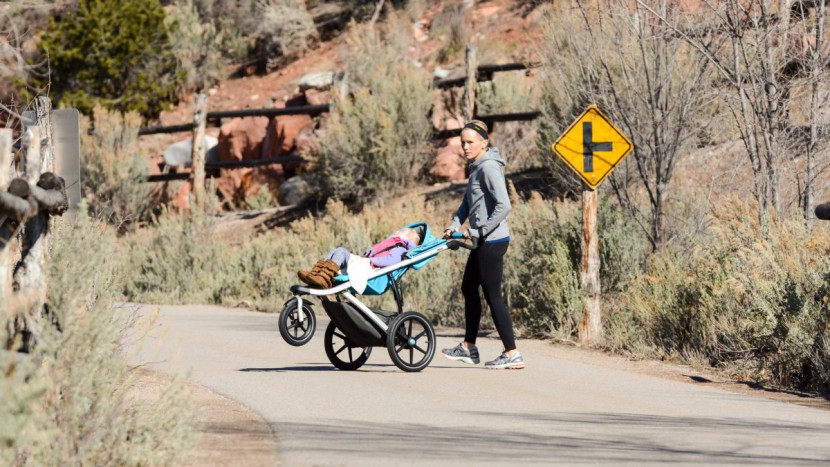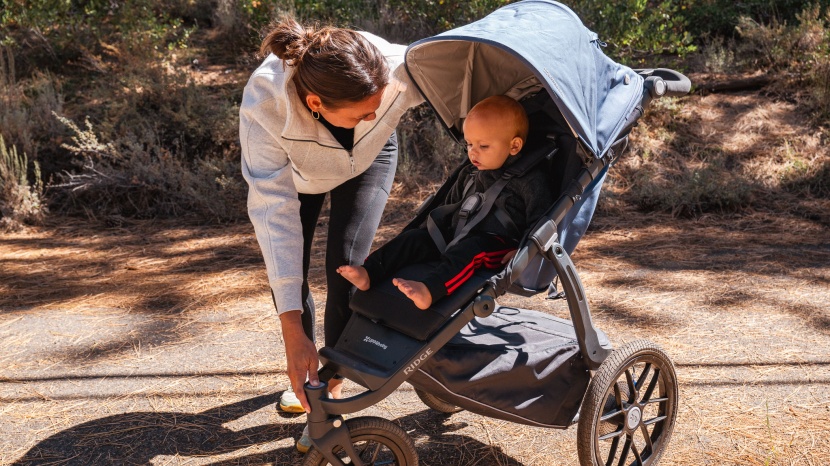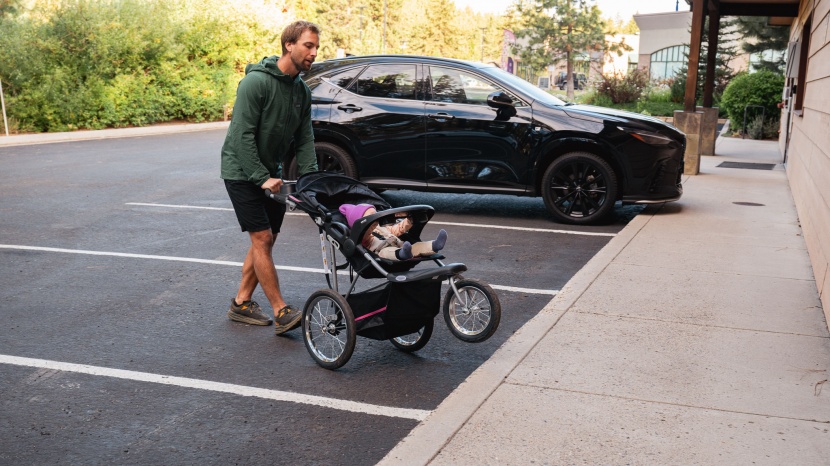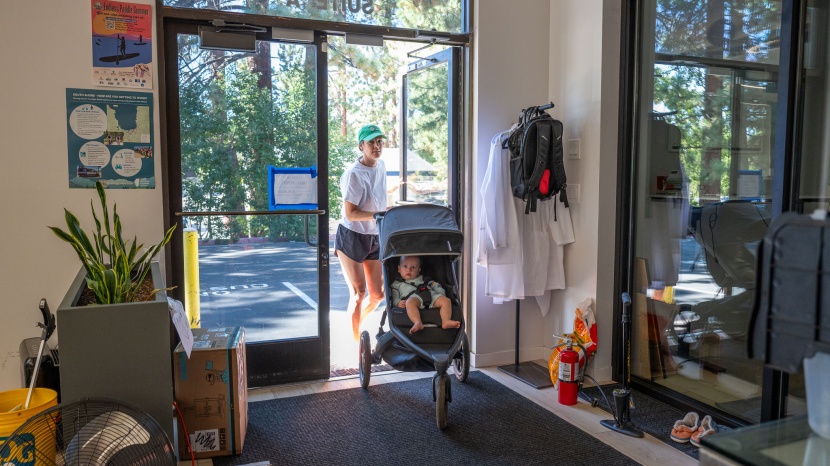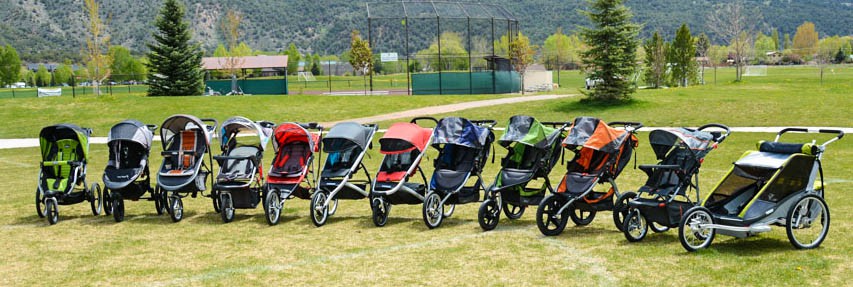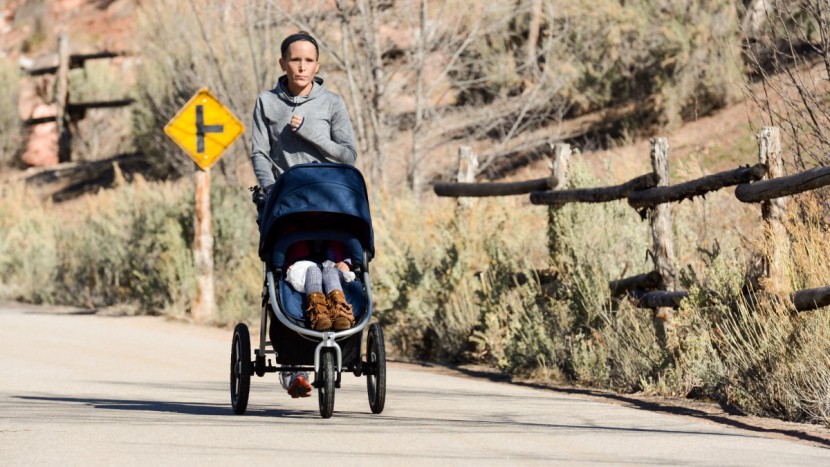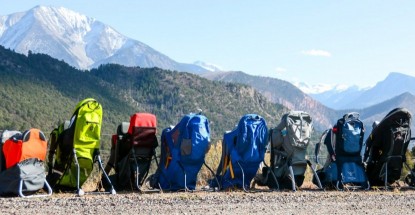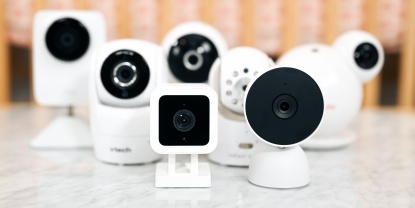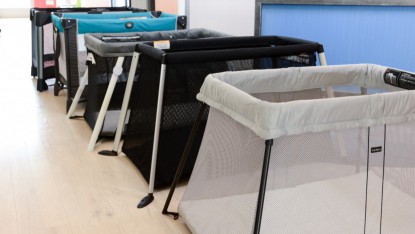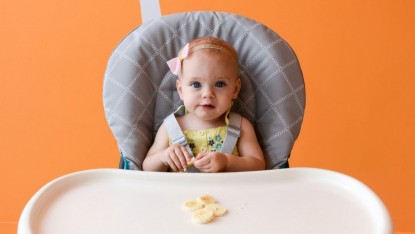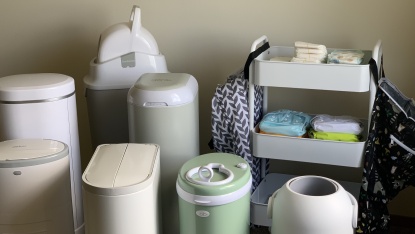After putting the top jogging strollers through months of testing, we learned a lot about what makes one stroller better than another and which features make the best jogging machine. We aim to share the lessons we've learned so that you can make the best buying decision for your family.
You may also enjoy our related review of the top standard-size strollers.
Why Buy a Jogging Stroller?
After 9+ months of pregnancy, many Moms find themselves ready for exercise or time outside. A stroller you can jog with is an investment in your health and mental well-being that, happily, is a form of exercise you can share with baby once they have developed strong enough neck muscles to handle the stress of jogging (8-12 months with your pediatrician okay). Most babies love to go jogging, and most parents find it an easy, cost-effective way to get active and into an exercise routine. Even if exercise isn't your goal, getting out of the house and into the sunshine can do wonders for your emotional and mental well-being, which could be out of whack with fluctuating hormones.
The following details will guide you through the important features of jogging strollers and help you decide which stroller and features are right for you.
Running with your baby in a jogging stroller and biking with your little one in a child bike trailer can expose your baby to stressful forces that can be harmful. Consult with your pediatrician to ensure your child has sufficient neck and core muscle strength before you begin using a jogging stroller or child bike carrier.
Dr. Spurrier, a pediatrician and founder of BabyGearLab, notes, “It's important to avoid running and biking with young babies due to the jarring and jostling stresses that can occur. All babies need to have adequate neck and core muscle strength before safely participating in any jogging or biking activities. This strength generally does not occur until at least eight months of age.”
One of the top manufacturers of joggers, BOB Gear, recommends waiting until your baby is at least eight months old before jogging. We would go one step further and say that running and biking with your baby should be strictly limited to smooth surfaces between 8 and 12 months. At a minimum of 12 months, children can begin to ride on rougher terrain, provided they are adequately restrained in a 5-point harness with proper padding and support. Also, children riding in a child bike trailer should wear an appropriate bike helmet. All of this is still true even if your younger baby is in an attached infant car seat carrier.How are Joggers Different?
Even full-size strollers are not safe for jogging with a baby. They lack the design features necessary to reduce the jarring shocks a baby could experience as parents jog over uneven surfaces. It's hard to avoid hazards like bumps in the road, curbs, uneven sidewalks, and sections of non-paved surfaces when you are running, and non-jogging strollers cannot navigate these hazards safely at speed.
Jogging strollers have several features designed to reduce the impact of the road:
- Larger rubber tires — A jogger typically has 16+ inch wheels in the rear and a 12+ inch wheel in the front (double the diameter of most traditional strollers). These larger wheels roll over bumps more easily, resulting in less stress for the baby. The bigger wheels also create less rolling resistance, so long runs require less effort. Traditional strollers usually have smaller plastic wheels that do nothing to reduce shock and are unsuitable for running. A few newcomers have foam-filled tires for a flat-free run! What?! Amazing.
- Effective suspension systems — A jogging-style stroller should include some kind of suspension to reduce further jarring. Most joggers have rear suspension and a sling-style seat that helps absorb some of the motion involved in jogging.
- Locking/Fixed front wheel — If you try to jog with a traditional stroller or even a jogger with the front wheel unlocked, you will find that the front wheel(s) start wobbling. This wobble creates strong vibrations in the stroller and makes jogging uncomfortable for you and your baby. This movement can also result in the front wheel(s) turning so sharply that the jogger tips over. All strollers designed for jogging provide the ability to lock the front wheel fully, and better products offer adjustable tracking for straight movement.
- Long distance between wheels — Strollers designed for jogging push the front wheel forward and away from the baby's center of gravity. This allows the front wheel to bounce in the event of a bump in the road with less stress transferred to the baby's body.
Your Multi-Purpose Stroller
Many jogging strollers could be considered multi-purpose solutions, doing the work of a jogger and traditional stroller in one product. We rate each product on its run-ability, and our test scores favor running performance, but many parents rely on their jogger as a stroller for everyday activities as well. Because of this, we rate each jogger on various additional metrics that impact serious running and daily activities. This information can help you decide which stroller will work best for you. So, while the award winners may be great for jogging, many are also good for “running” errands.
Overview of Basic Features
The common features you might see in a jogging-style stroller are:
- Three wheels with rubber tires: This means a smoother ride, but also that you'll need to check the pressure regularly like bicycle tires, and you'll need a pump to inflate them should they go flat.
The recommended pressure for inflating stroller tires often differs from the pressure shown on the side of the tire. ALWAYS double-check the stroller manual or company website for inflation guidelines. Do NOT rely on the pressure shown on the tire.
- Five-point harness: This harness goes over the shoulders, across the hips, and between the legs to secure the baby in the seat and minimize injuries in case of a crash, similar to the harness in infant car seats. The five points are crucial in the event of a stroller flip due to user error or a faulty front wheel assembly.
- Safety tether: A safety strap with one end attached to the stroller and another worn around your wrist. This strap prevents the stroller from rolling away from you and could save your baby's life if you accidentally let go of the handle with traffic or water nearby (please use it; we can't stress this enough).
Parking brake: It is critical to engage the parking brake every time you park the stroller. Double-check that the brake engages fully by attempting to move the stroller back and forth before letting go.
- Canopy: This will protect your baby from the sun and potential headwinds. A larger canopy with more features is better.
- Peek-a-boo window: Usually a covered window on the canopy to keep an eye on your child while jogging.
- Reclining seat: For baby's comfort.
- Under-seat storage basket: Storage for what you and baby might need when out and about. This storage area is key since the low center of gravity helps keep the stroller stable and avoid tip-overs. You should never put heavy objects on the handlebar, such as your purse or diaper bag. These items can cause the stroller to tip and create a safety risk.
- Wheels that are easy to take off and put back on: Most strollers we reviewed have mechanisms that make it easy to install and remove the wheels, making them more compact and easy to store. When replacing wheels, use caution to ensure they are mounted correctly.
- Folding mechanism: All the strollers we tested are relatively easy to fold, but remember that folded joggers are not small. Even though the wheels can be removed, joggers may still take up more space in your trunk than other kinds of strollers.
- Cupholders: While a cup holder is convenient, we fear they invite temptation to place hot liquids above your baby's head. Adding to that fear, most of the cup holders we tested were relatively shallow, and in our experience, most resulted in falling water bottles when going over small bumps. A cup holder less than 3 inches deep is unlikely to retain a tall water bottle as you navigate the stroller. Please be very careful with items placed in a cup holder; just because it has a holder doesn't mean it is safe to use it. If you rely on a nanny or caregivers, you might consider removing the cup holder to eliminate the risk that a hot cup of joe will be placed there at all.
Avoid carrying children while holding hot beverages; never place a hot beverage in the cup holder of a stroller.
How Do I Decide Which Stroller is Best for Me?
There are many jogging options on the market. However, no stroller has it all, so you should choose the features that best fit your lifestyle and goals. For most parents, this means being honest about your real running prowess. There is no judgment in this realm. However, there is also no need to buy more running stroller than you need, and being honest with yourself can translate into saving money and time. If you are a regular runner who ran avidly before pregnancy, you will likely want to invest more in your jogger. If you jog once a week and are more likely to find yourself running to catch a bus than running for fitness, then you probably don't need the highest-end model and will be happy with a cheaper option.
First: Fixed or Locking Swivel Front Wheel
Jogging-style strollers come with either a permanently fixed front wheel or a locking swivel front wheel. When jogging, having the front wheel fixed (or in locked mode) is a must! The locked wheel ensures that the stroller tracks straight and doesn't shoot off in an unexpected direction as it goes over a bump or loose debris. This feature also makes turning difficult, so you aren't able to accidentally make a sharp turn at high speed and risk rolling the stroller with your baby on board. Some serious runners believe that a fixed wheel is the only way to go for running, and as a result, they shy away from the options with a locking swivel wheel. However, our tests discovered this isn't as big of a concern as it used to be. Many swivel wheel designs have locking mechanisms that lock the wheel with little to no play at all. The rotating wheel adds functionality to the stroller, making it easier to use for everyday activities outside running.
A swivel front wheel offers better maneuverability and easier navigation in tight or crowded spaces like a store or festival. All of the swivel wheel products we reviewed can lock the front wheel in place, which is necessary for jogging. However, some of the locked swivel wheels aren't as stable as a fixed-front wheel.
You might ask, “If the Thule Urban Glide 3 performs as well as a stroller with a fixed front wheel, and it offers the maneuverability of a swivel wheel, why would I consider a fixed wheel stroller?.” Well, you may not want to. We understand this statement flies in the face of a long-held belief in the world of runners, but modern-day swivel-wheeled strollers performed as well or better than the fixed options in our tests.
On the other hand, you should know some perks of the fixed wheel. Many fixed-wheel models sport a handbrake, making slowing the stroller easier as you go downhill or up to a traffic light. This slowing mechanism can be an important safety feature, and it also helps tired runners ease to a complete stop with less exertion than body power alone. While it does not stop the stroller by itself and is not a parking brake, it is something to consider when looking at fixed-wheel options. Only a few of the swivel wheel options have a hand brake, and none of the top-scoring swivels had them. Also, most of the fixed front wheels we reviewed have a larger front wheel than the swivel products (16-inch vs. 12-inch). Some long-distance runners looking for speed and reduced rolling resistance may prefer the larger wheels for an easier push. Last, some fixed wheel options are lighter than the swivel wheel products, making them easier to push for long distances.
If you are serious about running, run more than a few miles every day, and don't plan to use this stroller for other kinds of trips, then you might go for a fixed front-wheel stroller with a handbrake; it's tough to beat the performance and safety features. You may also want to consider a handbrake if you run in a hilly community where the downhill slide might be easier with the use of a handbrake to slow your roll. However, for those that mainly walk, take frequent shorter runs, or the occasional jog, a locking swivel wheel stroller is a better all-around solution that gives you the best of both worlds but can still graduate up to serious running if it turns out to be a hobby that sticks.
Adjustable Tracking
Arguably, a more important feature than a fixed vs. swivel wheel is the ability to adjust the tracking of the front wheel. The better jogging products have adjustable tracking to keep the front wheel running straight. If the stroller pulls or veers in one direction while running on a flat surface, you can use the adjustment mechanism to keep the front wheel tracking straight and the stroller moving on course. Think of it as a quick front-end alignment on your stroller like you regularly get on your car. Alternatively, those products without adjustable tracking can result in chronic veering and constant manual correction while running. The manual correction will increase overall fatigue, and the running experience will be far less enjoyable.
Second: Adjustable Handlebar
An adjustable handlebar can come in handy if you (and anyone else who will regularly use the stroller) are taller or shorter than the average person. The average height of American women is 5'5 inches tall; the average male is closer to 5'10 inches tall; this alone is a big disparity if mom and dad plan to use the same stroller and are within the average range. To further complicate the issue, if one of you is over 6 feet tall, the non-adjustable handle might change your running style. It could result in inefficient running, possible injury, or increased fatigue. Luckily, stroller companies seem to be “grasping” the significance of the handlebar height, and almost all of those in our review offer an adjustable handlebar.
Before purchasing a stroller without an adjustable handlebar, ensure its height works for you and anyone else who might use it. As a guide, most people feel comfortable running with a handlebar close to the belly button level.
In the past, we felt that most of the adjustable handlebars made the stroller feel sort of “squishy” due to the up/down play found at the adjustment point. However, the handlebars in this review are easy to adjust and did not have noticeable play. On the contrary, they seem to have similar precision responsiveness as the fixed handlebars. In the end, we feel that being able to adjust the height of the bar is a crucial component of running if you aren't in the average height range. Given that it can impact your running biomechanics and thus your ability to run for longer durations and avoid injury, we can't find a reason not to choose an adjustable handle.
Third: Suspension
Having good suspension provides smooth strolling over uneven terrain, just like your car. Most joggers offer shocks on the rear wheels to help prevent the baby from jarring bumps in the road and make the whole experience more enjoyable. Most true jogging products will have excellent suspension. Historically, BOB strollers set the standard for great jogging products, partly because they have an impressive adjustable suspension that can be altered depending on the type of terrain you are going over and your child's weight. Not to be outdone, the Thule options also have a nice rear wheel suspension (though they aren't adjustable).
What kind of suspension to consider depends on how often you plan to run and the surfaces you plan to run on. In short, the rougher the ground, the better the suspension should be. Many of the cheaper models in our review did not have individual shocks, which leads us to believe that the manufacturers don't really expect you to run with them. The lack of shocks and adjustable tracking makes them a poor choice for serious runners, but other features make them good for moving over uneven surfaces.
Other features that can help cushion the blows associated with jogging are the style and padding of the seat. All the tested products claim to have a padded or comfortable seat for babies, but not all seats are created equal. The style of the seat seems more important than the padding to complicate things further. The sling-style seats, which suspend from the surrounding frame, offer a more comfortable experience for the baby because they lack a hard surface for the baby to bounce. It is similar to sleeping in a hammock or on a hardboard. The hammock will give with the bumps, and you won't be banging against a hard surface as you bounce up and down, while the board creates a hard surface to hit.
Given that your baby's happy cooperation will directly affect your running experience, you'll want the baby to be as cozy and safe as possible. Most of the true running strollers in this review had sling-style seats with enough padding to adequately cushion the baby from any jolts remaining after the shocks work their magic.
Fourth: Additional Features
Some of the models we reviewed included extra features like cup holders, pockets, snack trays, and more. Some essential features include an infant car seat adapter for strolling with babies under eight months old. Others are handy, like a parent tray with space to store your keys, wallet, and cellphone. Still, some are useful but have trade-offs, like snack trays for the baby that add to the stroller's weight, make it less aerodynamic, protrude in awkward ways when folded, and are virtually useless for a baby when you are moving quickly. However, some features are rather useless in practice, like built-in speakers. Ultimately, a boatload of features can be useful in a standard stroller, but keeping joggers simple is usually best.
Final Consideration: Tell the Truth
Above all other things, the most important factor you need to consider is how much running you will REALLY do. This consideration is important because, for everyday errands, you will value good maneuverability and ease of use over run-ability. You may be able to save a few dollars by skimping on the running features if you aren't a daily runner. However, if you are a serious runner, you will need a stroller with high marks for run-ability and the performance and features necessary for dedicated running. The more extensively you plan to use your stroller for running, the more you should be willing to pay for the sake of improved performance and safety for your baby.
We believe that joggers have improved so much in quality and design that you can have it all. You can have a swivel wheel for better maneuverability around town, and you can lock that wheel in a fixed position for running and fun outdoor adventures.
Alternatively, if you aren't really a jogger and the majority of your time will be spent walking with only the occasional run, then there are some less expensive options that are still nice strollers with useful features, such as a locking swivel wheel and easy push-and-turn.
Can a Jogging Option be My Only Stroller?
Depending on your specific situation, you could use a locking swivel front-wheel jogger as your only stroller. But remember that joggers do not fold small, are sometimes heavier, and are cumbersome to carry around, so they are not the ideal stroller for commuting or city life. Also, if you plan to stroll with a baby younger than 6-8 months, you must ensure the stroller is compatible with an infant car seat. Joggers also offer a smoother ride for babies, especially on rough roads, so if you are moving over a variety of surfaces, the versatility of a swivel wheel jogger could be a good fit as your main/only stroller, as a standard stroller may not have the best performance over uneven terrain.
Conclusion
Jogging strollers are really cool; no two ways about it. They are the most versatile, high-performance strollers on the market in any category. We like that most of them offer suspension, easy folding, giant sun shades, 5-point harnesses, sling-style seats, and a wide child weight/age range for years of use. We also think these strollers can work for many families as their only or primary stroller. All of our award winners are great options depending on your needs, and a few of the other products have features you might want but are not available on our winners.
A final caution for this category of strollers is that most of the lower-priced models lack performance or quality and, in the end, are not the best options for parents who want to run with their baby. While the price tags for the better joggers are higher, they are still lower than most of the top-performing full-size strollers, and we think parents should look at this factor when deciding what jogger to buy or if their jogging stroller could be their only stroller.

